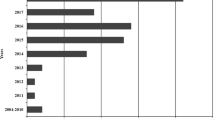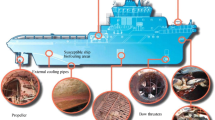Abstract
A controlled-temperature plankton wheel is described that is suitable for use on board a ship. The “IMER plankton wheel” system allows the use of various sizes of experimental bottles, up to 2.2 litres, the simulation of ambient light regimes and variable speed control for the rotation of the experimental bottles. The flexibility of the system was demonstrated by investigating the relationship between temperature and ingestion rate of an herbivorous copepod. Using four of the IMER plankton wheels simultaneously at four different temperatures (5°, 10°, 15° and 20° C), the ingestion rate of Calanus helgolandicus, feeding on Thalassiosira weissflogii, was shown to increase with increasing temperature; from a transformation of loge (ingestion rate), this relationship was calculated as a Q10 (10° to 20°C) for Copepodite Stage V (Q10 4.5) and adult female (Q10 2.7) C. helgolandicus. The possibility of damaging cells, by rotation at 2 rpm, was investigated using the spinose form of the diatom T. weissflogii. Such rotation did not cause any damage to the spines of T. weissflogii, but mixing this diatom with a magnetic stirrer bar did damage the spines to varying degrees, depending on the volume being mixed.
Similar content being viewed by others
Literature cited
Checkley, D. M.: The egg production of a marine plankton copepod in relation to its food supply: Laboratory studies. Limnol. Oceanogr. 25, 430–446 (1980)
Copping, A. E. and C. J. Lorenzen: Carbon budget of a marine phytoplankton-herbivore system with carbon-14 as a tracer. Limnol. Oceanogr. 25, 873–882 (1980)
Corner, E. D. S., R. N. Head and C. C. Kilvington: On the nutrition and metabolism of zooplankton. VIII. The grazing of Biddulphia cells by Calanus helgolandicus. J. mar. biol. Ass. U.K. 52, 847–861 (1972)
Dagg, M. J. and D. W. Grill: Natural feeding rates of Centropages typicus females in the New York Bight. Limnol. Oceanogr. 25, 597–609 (1980)
Dagg, M. J., J. Vidal, T. E. Whitledge, R. L. Iverson and J. J. Goering: The feeding, respiration and excretion of zooplankton in the Bering Sea during a spring bloom. Deep-Sea Res. 29, 45–63 (1982)
Donaghay, P. L. and L. F. Small: Food selection capabilities of the estuarine copepod Acartia clausi. Mar. Biol. 52, 137–146 (1979)
Frost, B. W.: Effects of size and concentrations of food particles on the feeding behaviour of the marine planktonic copepod Calanus pacificus. Limnol. Oceanogr. 17, 805–815 (1972)
Frost, B. W.: Feeding behaviour of Calanus pacificus in mixtures of food particles. Limnol. Oceanogr. 22, 472–491 (1977)
Frost, B. W., M. R. Landry and K. P. Hassett: Feeding behaviour of large calanoid copepods Neocalanus cristalus and N. plumchrus from the subarctic Pacific Ocean. Deep-Sea Res. 30, 1–13 (1983)
Gamble, J. C.: Copepod grazing during a declining spring phytoplankton bloom in the Northern North Sea. Mar. Biol. 49, 303–315 (1978)
Gifford, D. J., R. N. Boher and C. M. Boyd: Spines on diatoms: do copepods care? Limnol. Oceanogr. 26, 1057–1061 (1981)
Gottfried, M. and M. R. Roman: Ingestion and incorporation of coral-mucus detritus by reef zooplankton. Mar. Biol. 72, 211–218 (1983)
Harris, R. P. and G.-A. Paffenhöfer: Feeding, growth and reproduction of the marine planktonic copepod Temora longicornis Müller. J. mar. biol. Ass. U.K. 56, 675–690 (1976)
Huntley, M.: Nonselective, nonsaturated feeding by three calanoid copepod species in the Labrador Sea. Limnol. Oceanogr. 26, 831–842 (1981)
Jerlov, N. G.: Marine optics, 2nd ed. 203 pp. Amsterdam: Elsevier 1976. (Elsevier Oceanogr. Ser. No. 14)
Kiørboe, T., F. Møhlenberg and H. Nicolajsen: Ingestion rate and gut clearance in the planktonic copepod Centropages hamatus (Lilljeborg) in relation to food concentration and temperature. Ophelia 21, 181–194 (1982)
Landry, M. R.: Detection of prey by Calanus pacificus: implications of the first antennae. Limnol. Oceanogr. 25, 545–549 (1980)
Landry, M. R.: Switching between herbivory and carnivory by the planktonic marine copepod Calanus pacificus. Mar. Biol. 65, 77–82 (1981)
Paffenhöfer, G.-A.: Cultivation of Calanus helgolandicus under controlled conditions. Helgoländer wiss. Meeresunters. 20, 346–359 (1970)
Paffenhöfer, G.-A.: Feeding, growth and food conversion of the marine planktonic copepod Calanus helgolandicus. Limnol. Oceanogr. 21, 39–50 (1976)
Paffenhöfer, G.-A. and R. P. Harris: Feeding, growth and reproduction of the marine planktonic copepod Pseudocalanus elongatus Boeck. J. mar. biol. Ass. U.K. 56, 327–344 (1976)
Paffenhöfer, G.-A. and S. C. Knowles. Feeding of marine planktonic copepods on mixed phytoplankton. Mar. Biol. 48, 143–152 (1978)
Poulet, S. A.: Grazing of Pseudocalanus minutus on naturally occurring particulate matter. Limnol. Oceanogr. 18, 564–573 (1973)
Roman, M. R.: Feeding of the copepod Acartia tonsa on the diatom Nitzschia closterium and brown algae (Fucus vesiculosus) detritus. Mar. Biol. 42, 149–155 (1977)
Roman, M. R. and P. A. Rublee: Containment effects in copepod grazing experiments: a plea to end the black box approach. Limnol. Oceanogr. 25, 982–990 (1980)
Roman, M. R. and P. A. Rublee: A method to determine in situ zooplankton grazing rates on natural particulate assemblages. Mar. Biol. 65, 303–309 (1981)
Runge, J. A.: Effects of hunger and season on the feeding behaviour of Calanus pacificus. Limnol. Oceanogr. 25, 134–145 (1980)
Schnack, S. B.: Feeding of Calanus helgolandicus on phytoplankton mixtures. Mar. Ecol. Prog. Ser. 1, 41–47 (1979)
Steele, J. A.: The structure of marine ecosystems, 128 pp. Cambridge, USA: Harvard Press 1974
Steele, J. A. and B. W. Frost: The structure of plankton communities. Phil. Trans. R. Soc. 280, 485–534 (1977)
Steele, J. A. and M. M. Mullin: Zooplankton dynamics. In: The sea, pp 857–890. Vol. 6. Ed. by E. D. Goldberg, I. N. McCare, J. J. O'Brien and J. H. Steele. New York: Interscience 1977
Vidal, J.: Physioecology of zooplankton. I. Effects of phytoplankton concentration, temperature, and body size on the growth rate of Calanus pacificus and Pseudocalanus sp. Mar. Biol. 56, 111–134 (1980a)
Vidal, J.: Physioecology of zooplankton. II. Effects of phytoplankton concentration, temperature, and body size on the development and molting rates of Calanus pacificus and Pseudocalanus sp. Mar. Biol. 56, 135–146 (1980b)
Yentsch, C. S.: The influence of phytoplankton pigments on the colour of sea water. Deep-Sea Res. 7, 1–9 (1960)
Author information
Authors and Affiliations
Additional information
Communicated by J. Mauchline, Oban
Rights and permissions
About this article
Cite this article
Robins, D.B., Bellan, I.E. A controlled-temperature plankton wheel. Mar. Biol. 92, 587–593 (1986). https://doi.org/10.1007/BF00392518
Accepted:
Issue Date:
DOI: https://doi.org/10.1007/BF00392518




